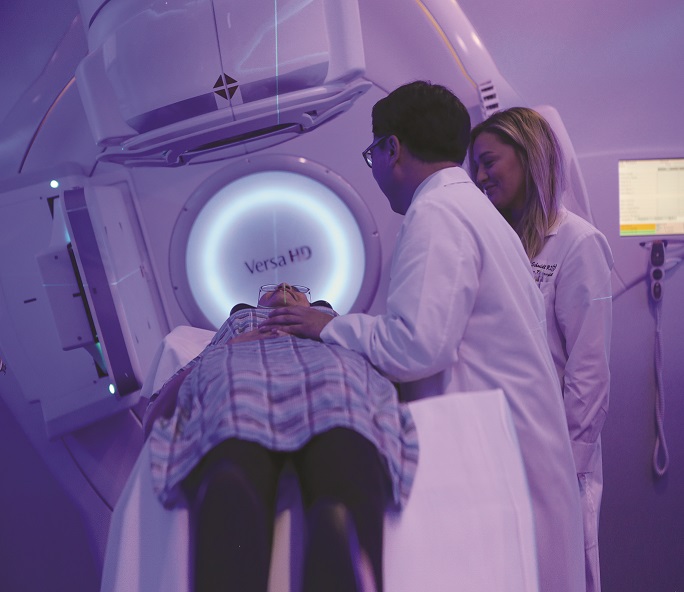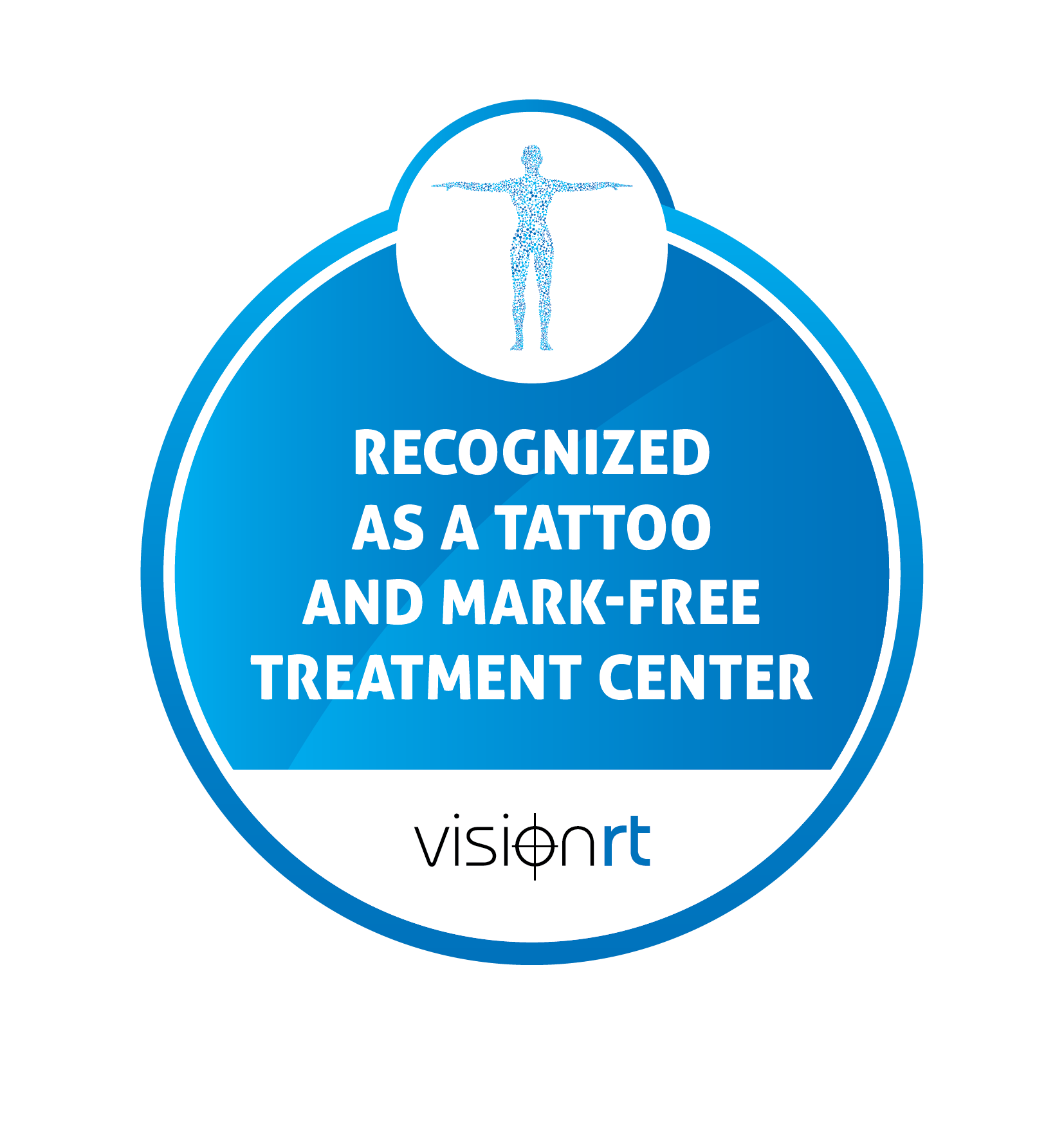Tattoo-less Radiation Therapy for Breast Cancer Patients

Ridley-Tree Cancer Center offers tattoo-less radiation therapy for breast cancer, thanks to Vision RT, an innovative technology delivering Surface Guided Radiation Therapy.

(SANTA BARBARA, CA) Vision RT uses infrared sensors to ensure precise positioning before and during radiation therapy, eliminating the need for tattoos. This is meaningful for patients wishing to skip these lifelong reminders of their experience with cancer, and any stress and psychological impacts that could result from receiving permanent marks on their skin which are connected to their diagnosis.
Ridley-Tree’s radiation therapists use Vision RT to track positioning in real time. This method is just as accurate as traditional radiotherapy, and can be done more quickly, reducing time in the treatment room.
In the past, tattoos the size of small pen marks were placed near the sternum, as a necessary component of treatment in order to accurately map out the cancer in the body, and put the patient in the best position for radiation therapy. While
the tattoos would fade, for most patients, they typically would always be visible on the skin.

"For decades, positioning tattoos have been a needed part of radiation treatment for breast cancer. They are permanent however, and remain as unnecessary and constant reminders. With the advent of modern technologies such as surface imaging or video-based tracking guidance systems like Vision RT, we are now able to offer tattoo-less treatment for our breast cancer patients. They can move on with their lives without a visual reminder of their cancer care."
- W. Warren Suh, MD, MPH, FACR, Medical Director of Radiation Oncology
Currently, Ridley-Tree Cancer Center is the only cancer center in the vicinity to offer tattoo-less radiation therapy for breast cancer.